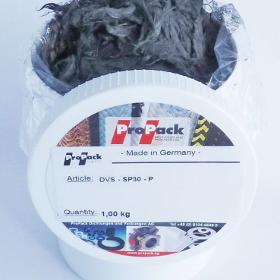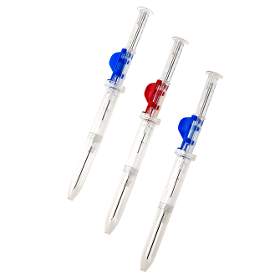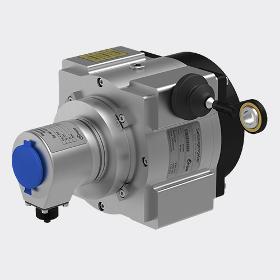- europages
- >
- COMPANIES - SUPPLIERS - SERVICE PROVIDERS
- >
- injection presses
Results for
Injection presses - Import export

FRIMO GROUP GMBH
Germany
Adhesive-free equipment Bonding with the substrate component is carried out without adhesive. These processes are particularly useful for back-injected or back-pressed components, where the decorative material needs to cover component edges.
Request for a quote
PROPACK DICHTUNGEN UND PACKUNGEN AG
Germany
2 Component Fiber Sealing System impregnated with Graphite and MoS2 lubricant Pressure Capability is dependent on design of endrings. Characteristics Simple installation Use without barrier fluid Maintenance free Shaft protecting No adjusting of gland Re-pressurize in operation Operating range Velocity [v max]: 12 m/s Temperature: t = -40… +315 °C pH: 2 - 12 Density: 1.10 g/cm³ Pressure Capability is dependent on design of endrings. Main application Equipment which is badly accessible Worn shaft sleeves Non centric running shafts Suitable for Higher Temperature applications Accessories Special endrings made of HPU and PTFE/Graphite compound for non centric running shafts Form of delivery Unit for H- and P-Type: Cans 1 kg, hobbock of 25 Kg 2 Component System Component H: Is used for the basic manual fill of the stuffing box. Component P: Is used for Injection with press DVS TP 9000.
Request for a quote
PROPACK DICHTUNGEN UND PACKUNGEN AG
Germany
2 Component Fiber sealing system impregnated with PTFE and special lubricant Pressure Capability is dependent on design of endrings. Characteristics Simple installation Use without barrier fluid Maintenance free Shaft protecting No adjusting of gland Re-pressurize in operation Operating range Velocity [v max]: 8 m/s Temperature: t = -10… +180 °C pH: 2 - 12 Density: 1.10 g/cm³ Pressure Capability is dependent on design of endrings. Main application Equipment which is badly accessible Worn shaft sleeves Non centric running shafts Pulper Suitable for Universal use Accessories HPU Endrings Form of delivery Unit for H- and P-Type: Cans 1 kg, hobbock of 25 Kg 2 Component System Component H: Is used for the basic manual fill of the stuffing box. Component P: Is used for Injection with press DVS TP 9000.
Request for a quote
GAPLAST GMBH
Germany
SOLID Sub-cutaneous Use After removal of the security clip and protection cap the syringe is ready for use. The doctor applies the implant syringe to the patient’s tissue, injects subcutaneously and presses the implant syringe completely together. During the application, the syringe shell is always in touch with the skin. First the tablet (implant) is placed in the tissue via the plunger in the needle channel and then the needle is withdrawn from the patient’s tissue. After the administration the needle is protected both by the plunger and by the needle cover, afterwards the syringe can be disposed as usual. Implant Syringe (drug device combination product) Monodose The implantation syringe is qualified for the placement of rod-shaped, long-acting tablets. These are intended to release their active substance gradually into the tissue layers of the patient. For this purpose, it is necessary that the tablet is placed subcutaneously by a needle. Generally, this is done with a...
Request for a quote
FERNSTEUERGERÄTE KURT OELSCH GMBH
Germany
Rope Length Transmitter with high precision analog or digital encoders The determination of measuring lengths in the range of one up to several meters is preferably carried out by using well priced and easy-tomount transducers on the basis of the draw wire measuring principle. In connection with measuring problems of industrial applications e.g. on - cranes, drilling machines and excavators - pressing, punching and injection moulding machines - weirs and lock gates - multilevel shelving rack systems and theatre stages - wood- and stone-working machines and also in - instrument engineering, high-tech medical devices etc. Rope length measuring systems series SL 3000 have proven for years to be very reliable, capable of measuring lengths up to 40 m with high accuracy and reliability even in extremely dusty and moist atmospheres.
Request for a quote
ILS INNOVATIVE LABOR SYSTEME GMBH
Germany
Plunger Force Adjustment Video Tutorial ILS glass syringes are manufactured to exacting standards and are quality tested to meet or exceed our minimum performance specifications for accuracy and precision. Our testing methods are in accordance GLP protocols and utilize equipment that is traceable to NIST standards. Copies of actual test result are available upon request. Syringe use: - eliminate the carry over between the samples. Rinse the syringe with the to be examined liquid 10-20 times. Wash the syringe and discard the first 2 -3 washes. - for injection overfill the microlitersyringe. Press the plunger until the accurate volume. Syringe cleaning - pull the piston out of the glass body of the microsyringe - rinse inside the glass body with detergents (in the final rinsing cycle it is best to use a low boiling point, solvent or alcohol) - dry the glass body by air flow, e.g. with a vacuum pump CAUTION: DO NOT IMMERSE THE MICROSYRINGE IN THE SOLVENT: THE GLUE PARTS CAN BE SOLVED. Needle blocked: - use the cleaning wires from ILS you find a wide range at www.microsyringes.com Plunger with seal - if you want reduce the plunger force, heat the assembled syringe in oven at 60°C 15 minutes - Silicone or other lubricants that are compatible with your sample may also be used to wet the plunger tips CAUTION: RUNNING A TEFLON-TIPPED PLUNGER DRY MAY CAUSE THE PTFE TO SHRED OR PULL LOOSE FROM THE PLUNGER ROD, RESULTING IN LEAKS. Plunger Tip ss*=stainless steel (N- Series) -clean the plunger in an ultra sonic bath - wipe the piston with a fibre-free cloth (i.e. no paper towel) Plunger of zero dead volume syringes (T- Series) - loose the nut before pull out or insert the plunger - wipe the piston with a fibre-free cloth (i.e. not paper towel)
Do you sell or make similar products?
Sign up to europages and have your products listed
Results for
Injection presses - Import exportNumber of results
6 ProductsCountries
Company type
Category